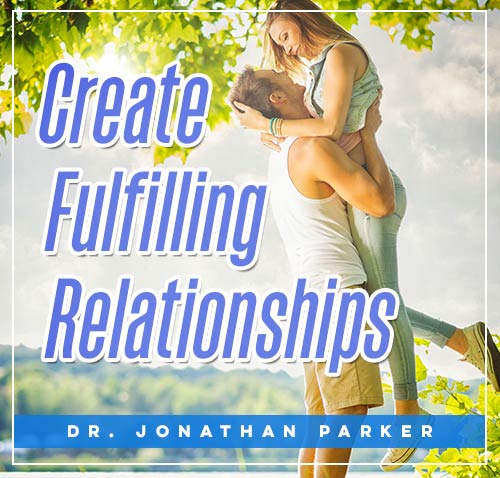Healthy Boundaries: A Relationship Guide

Hey there, amazing readers! 🖐️ Just a quick note: yes, we know there are a lot of ads here. Trust us, we get it—it’s not the prettiest look, but they help us keep this blog alive and kicking. Those pesky little ads cover the costs of all the behind-the-scenes magic, from hosting and tech stuff to creating content we hope you’ll love.
We’re committed to delivering quality posts, and your support (even just sticking around despite the ads) means everything to us. So, bear with us, and thanks for helping us keep the good vibes rolling. Now, on to the fun stuff! 😉
TRANSLATE BUTTON AT THE END OF THE ARTICLE
Hey there, wonderful readers!
If you’re diving into the world of relationships, whether they’re romantic, familial, or friendships, you might have come across the term “healthy boundaries.” Now, this might sound a bit clinical, but trust me—boundaries are the unsung heroes of happy, thriving relationships!
In this cheerful guide, we’ll explore what healthy boundaries are, why they matter, and how we can establish them in our lives.
So, grab a cozy drink, and let’s unravel this important topic together!
What Are Healthy Boundaries?
Before we get into the nitty-gritty, let’s define what we mean by “healthy boundaries.” Essentially, boundaries are the invisible lines that define where one person ends, and another begins.
They help us communicate our needs, protect our well-being, and maintain our individuality within relationships.
Imagine them as a fence around your garden, keeping out weeds but allowing sunshine and rain to nourish your plants.
Sounds nice, right?
Types of Boundaries
Boundaries can be categorized into different types, each serving a unique purpose.
Here’s a quick breakdown:
Physical Boundaries: These pertain to personal space and physical touch.
For example, it’s perfectly okay to tell someone you need a hug or that you prefer a little more distance in a crowded room.
Emotional Boundaries: These involve protecting your feelings and not allowing others to dictate your emotional state.
It’s about understanding your emotions and expressing them without fear of judgment.
Time Boundaries: These are all about how we manage our time and prioritize commitments.
For instance, saying “no” to an invitation when we need some self-care time is a healthy choice!
Material Boundaries: These relate to our belongings and financial resources.
It’s essential to communicate what we are comfortable sharing and what we want to keep private.
Understanding these types of boundaries can help us navigate our relationships more effectively and maintain a healthy balance.
Why Are Healthy Boundaries Important?
So, why do we need healthy boundaries?
I mean, isn’t it easier to just go with the flow?
Well, let’s explore the numerous benefits that come with setting boundaries in our lives.
Protecting Our Well-Being
Healthy boundaries are like armor for our emotional well-being.
They help us fend off negativity, toxicity, and unhealthy dynamics that can drain our energy.
When we establish clear boundaries, we create a safe space for ourselves, where we can thrive and feel secure.
Fostering Respect and Understanding
Setting boundaries promotes mutual respect and understanding in our relationships.
When we communicate our limits, we invite others to do the same.
This two-way street fosters a deeper connection based on trust and compassion.
Example: If you’re feeling overwhelmed, telling your friend you need some alone time not only respects your needs but also encourages them to express their own when needed.
Enhancing Communication
Boundaries are a fantastic catalyst for improving communication.
They encourage us to articulate our needs and desires, leading to more open and honest conversations.
Practice Active Listening: When discussing boundaries, we can practice active listening, ensuring both parties feel heard and valued.
Boosting Self-Esteem
Establishing and maintaining healthy boundaries can significantly boost our self-esteem.
When we assert our limits, we affirm our worth and prioritize our needs, leading to a more confident and empowered version of ourselves.
How to Identify Your Boundaries
Now that we know how essential boundaries are, let’s talk about how to identify our own!
This process requires a little introspection, but it can be quite enlightening.
Here are some steps to get us started:
Self-Reflection
Grab a journal (or open your notes app) and take some time for self-reflection.
Ask yourself questions like:
What situations make me feel uncomfortable or stressed?
Where do I feel my limits are being pushed?
How do I want to be treated in my relationships?
Trust Your Feelings
Our feelings can guide us in identifying boundaries.
If something feels “off,” it’s essential to pay attention.
Recognizing discomfort can help us pinpoint where we need to draw the line.
Start Small
If you’re new to setting boundaries, start with small ones.
For instance, if you need time to recharge after a busy week, communicate this to friends and family.
It’s a simple yet effective way to practice.
Be Open to Change
Remember, boundaries aren’t set in stone.
As we grow and evolve, our boundaries may change too.
Stay open to reassessing and adjusting them as needed.
Communicating Your Boundaries
Okay, we’ve identified our boundaries—now what?
It’s time to communicate them effectively!
Here are some tips to help us express our needs clearly and kindly.
Be Assertive, Not Aggressive
When communicating boundaries, it’s crucial to be assertive without coming across as aggressive.
Use “I” statements to express your feelings and needs.
Example: Instead of saying, “You always interrupt me,” try, “I feel overlooked when I’m interrupted, and I’d appreciate it if we could take turns speaking.”
Use Clear Language
Avoid vague terms.
Be straightforward about what you need.
Example: If you need time alone, say, “I need some time to recharge this weekend.
Let’s plan to catch up next week instead.”
Set Expectations
When establishing boundaries, it’s helpful to set expectations for yourself and others.
Example: “I can’t respond to messages after 8 PM during the week, but I’ll get back to you in the morning.”
Be Prepared for Reactions
Not everyone will respond positively to our boundaries, and that’s okay!
Be prepared for a range of reactions, and stay firm in your resolve.
If someone pushes back, calmly reiterate your needs.
Respecting Others’ Boundaries
Setting our boundaries is just one part of the equation; respecting others’ boundaries is equally important!
After all, relationships are a two-way street.
Here’s how we can do it:
Listen Actively
When someone shares their boundaries, practice active listening.
Show that you value their feelings and needs by giving them your full attention.
Validate Their Feelings
Acknowledging someone’s feelings is key to fostering understanding.
Even if you don’t fully agree, showing empathy can go a long way.
Example: “I understand that you need space right now, and I respect that.
Just know I’m here if you want to talk.”
Avoid Judgment
We all have different comfort levels and boundaries.
Refrain from judging someone else’s boundaries, even if they seem strict or unusual to you.
Check In Regularly
In relationships, it’s a good idea to check in regularly about boundaries.
As situations change, so do needs.
Open lines of communication ensure that everyone feels comfortable and respected.
Overcoming Boundary Challenges
Even with the best intentions, challenges can arise when establishing and maintaining boundaries.
Let’s explore some common obstacles and how we can navigate them.
Guilt and People-Pleasing
Many of us struggle with feelings of guilt when asserting our boundaries, especially if we’re used to people-pleasing.
Remember, it’s okay to prioritize ourselves!
Tip: Remind yourself that setting boundaries is a form of self-care, not selfishness.
Fear of Conflict
The thought of conflict can be intimidating, but it’s often less scary than we imagine.
Most people respect honesty, even if it leads to difficult conversations.
Tip: Approach boundary-setting as an opportunity for growth, not a confrontation.
Pushback from Others
Sometimes, people may push back against our boundaries, which can feel disheartening.
Tip: Stay firm in your resolve and gently remind them why your boundaries matter to you.
The Benefits of Healthy Boundaries
Let’s take a moment to bask in the glow of all the benefits healthy boundaries bring to our lives!
Embracing boundaries can lead to:
Improved Relationships
As we communicate our needs and respect others, we cultivate deeper connections built on trust and understanding.
Increased Personal Growth
Establishing boundaries encourages us to reflect on our needs and values, fostering personal growth and self-discovery.
Enhanced Emotional Well-Being
When we prioritize our needs, we create space for emotional balance and well-being.
This can lead to less stress and more joy in our lives.
Stronger Self-Esteem
As we practice setting and maintaining boundaries, our self-esteem flourishes.
We learn to value ourselves and our needs, leading to a more confident version of us.
Conclusion: Embracing Healthy Boundaries
In this journey of relationships, healthy boundaries are our trusted companions.
They protect us, nurture our connections, and empower us to live authentically.
As we navigate the intricacies of relationships, let’s remember that establishing boundaries is a sign of strength, not weakness.
So, let’s embrace the power of boundaries with open hearts!
By honoring our own needs and the needs of others, we can create fulfilling, respectful, and joyful relationships that enrich our lives.
Cheers to healthy boundaries, and here’s to loving ourselves and each other a little more every day!

The Enlightenment Journey is a remarkable collection of writings authored by a distinguished group of experts in the fields of spirituality, new age, and esoteric knowledge.
This anthology features a diverse assembly of well-experienced authors who bring their profound insights and credible perspectives to the forefront.
Each contributor possesses a wealth of knowledge and wisdom, making them authorities in their respective domains.
Together, they offer readers a transformative journey into the realms of spiritual growth, self-discovery, and esoteric enlightenment.
The Enlightenment Journey is a testament to the collective expertise of these luminaries, providing readers with a rich tapestry of ideas and information to illuminate their spiritual path.
Our Diverse Expertise 🌟
While our primary focus is on spirituality and esotericism, we are equally passionate about exploring a wide range of other topics and niches 🌍📚. Our experienced team is dedicated to delivering high-quality, informative content across various subjects ✨.
To ensure we provide the most accurate and valuable insights, we collaborate with trusted experts in their respective domains 🧑🏫👩🏫. This allows us to offer well-rounded perspectives and knowledge to our readers.
Our blog originally focused on spirituality and metaphysics, but we’ve since expanded to cover a wide range of niches. Don’t worry—we continue to publish a lot of articles on spirituality! Frequently visit our blog to explore our diverse content and stay tuned for more insightful reads.






